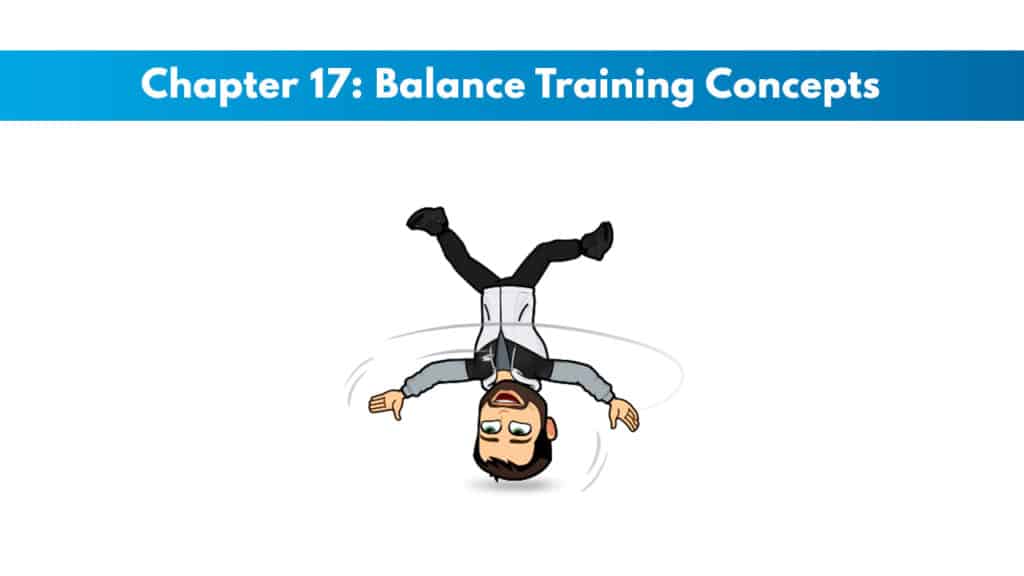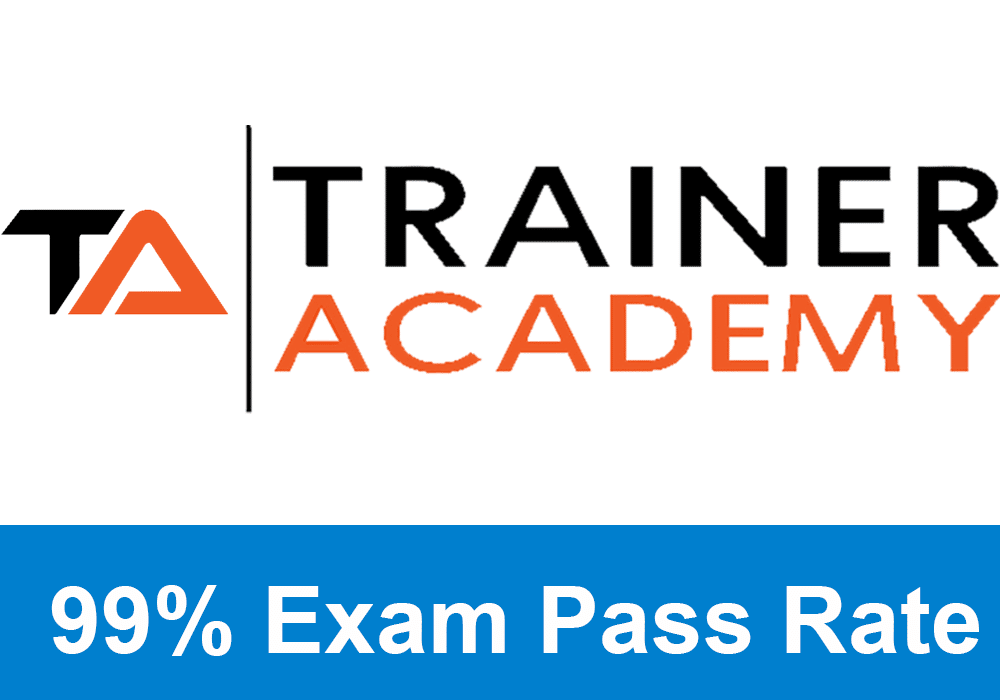
If you have not signed up for NASM CPT, sign up here to save 25% with my personal code PTP25.
Get your copy of the NASM CPT exam cheat sheet. It helps immensely for studying for the exam.
My PTP students report cutting their NASM study time and effort in half with Trainer Academy.
Benefit from the Exam Pass Guarantee and Retake Fee Guarantee. Plus, take advantage of my current discount code PTPJUNE for 35% off the MVP Program (Ends July 3rd, 2025).
Try it out for free here to see if it’s right for you, or read my detailed review for further insights.
Chapter Goals:
- Discuss the scientific rationale for training balance.
- Be able to talk about balance training with your clients.
- Give a summary of the benefits of balance training for different types of clients with various health goals.
- Find the right progression sequences for this style of training.
- Be able to use the right methods for executing, instructing, and curing balance training exercises.
Essential Concepts of Balance
The ability for us to maintain postural control and balance is fundamental for general performance, injury resistance, and rehab that will follow any injury.
Balance is somewhat loosely defined as the ability to keep their center of gravity in the base of support they have.
The center of gravity is the body’s midpoint, which varies based on the person and their body.
We put balance into the categories of static, semi-dynamic, and dynamic.
Static balance is when someone seeks to maintain their posture and control in a non-moving position. Semi-dynamic balance is when someone wants to keep balance while the base only moves. Dynamic stability is keeping balance while the center of gravity is ever-changing, usually on many uneven surfaces.
Keeping balance in different situations requires using multiple systems together, like the visual, vestibular, and somatosensory systems.
Mechanisms of Balance
The ability to feel the center of mass moving toward a person’s limits is a product of those three systems we just mentioned: visual, vestibular, and somatosensory.
Exclusive PTP CPT Offers |
||
|---|---|---|
Most Popular Cert | Best Online NCCA Cert | Best Study Materials |
Gold Standard Cert | A Good Option | Best CPT for you?  |
Scientific Rationale for Balance Training
Research has shown balance training to be great for optimizing someone’s performance, improving resistance to injuries, and enhancing rehab.
Balance Training for Performance has been shown to:
- Improve static and dynamic balance
- Improve neuromuscular control in the lower extremities
- Improve balance after injury
- Improve lower extremity muscular strength (especially when done with resistance training)
- Improve the ability to participate in daily living activities and decrease self-reported disability in older adults.
- Improves agility-based outcomes in athletes
Balance Training has been seen to do these things in terms of resistance to injury:
- Improves landing mechanics, which may reduce lower extremity injuries, such as ACL injuries and ankle sprains
- Improves performance in athletes, such as vertical jump height
- Reduces risk of falling in older adults
- Improves physical performance and overall confidence during activities of daily living in older adults
Balance training done for Rehab has been shown to:
- Improves performance during single-limb activities
- Improves proprioception and self-reported function in athletes with ankle instability
- Enhances rehabilitation outcomes for both limbs in athletes who suffer an ACL injury and surgery on one limb
- Enhances rehabilitation outcomes that focus on decreasing the risk of falls in older adults
Importance of Properly Training the Balance System
Effective balance training programs should make sure to challenge the threshold of someone’s limit of stability.
The individual’s threshold should be stressed in multiplanar ways, enriched proprioceptively in the environment, and the programs should use functional patterns of movement to improve static, semi-dynamic, and dynamic stability.
Guidelines for Balance Training
Exercise for balance is needed as part of an integrated program due to help ensure good muscle recruitment and coordinated movement.
The main goal is to increase the awareness of the limits of stability for the client with progression in proprioceptive demands during exercise.
Designing a Balance Training Program
Proper programs will always be systematic and progressive. The exercises can be regressed and progressed through changes in the requirements for surface, visual condition, and position of the body and its movements.
Initially, exercises should start with very little to no movement in the joints of the balance leg.
Next, we progress to eccentric and concentric movements of the leg that balances in a full range of motion.
Lastly, the progression should be designed to develop correct deceleration for moving the body from dynamic to controlled stationary positions.
Quality is always more important than quantity, and the five checkpoints should always be watched:
- Feet pointing straight ahead
- Knees in line with the second and third toes (avoid allowing knees to cave inward)
- Hips level and in a neutral position
- Shoulders in a neutral position (not protracted or elevated)
- Head with cervical spine in a neutral position (chin tuck)
It is important to know the steps and the differences for all of the exercises throughout this chapter of the book, and the videos are very well done in teaching the movements.

 Have a question?
Have a question? 



Tyler Read
PTPioneer Editorial Integrity
All content published on PTPioneer is checked and reviewed extensively by our staff of experienced personal trainers, nutrition coaches, and other Fitness Experts. This is to make sure that the content you are reading is fact-checked for accuracy, contains up-to-date information, and is relevant. We only add trustworthy citations that you can find at the bottom of each article. You can read more about our editorial integrity here.